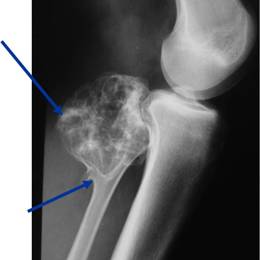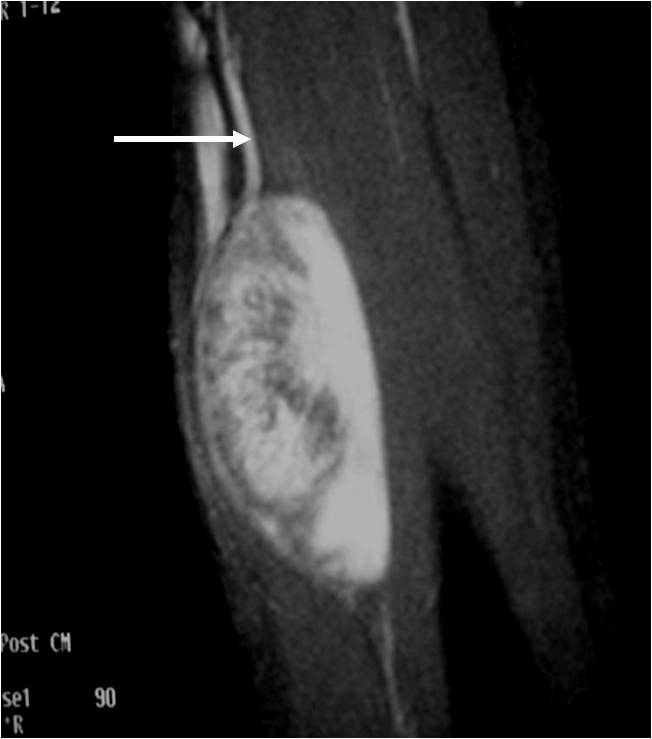What is an Osteochondroma?
Osteochondromas are outgrowths that occur at the end of the bone near the growth plate and are covered with cartilage. The prevalence is unknown because many are asymptomatic and found accidentally on radiographs (X-rays, MRIs, etc.) taken for other reasons. The most common benign tumor, which constitutes 35% of all benign bone tumors, and 10% of all bone tumors overall.
Who is usually affected?
- • Male predominance 3:1.
- • Usually presents in the third decade of life.
- • Most commonly between ages 10 and 30.
Common Bones Involved
- • Any portion of the skeleton that has cartilage can develop the condition.
- • Most common in the knee area (35% of cases).
Causes
- • There is a autosomal dominant inheritance genetic cause.
Signs and Symptoms
- • Signs and symptoms include pain and a hard swelling.
Biological Behavior
- • Osteochondromas are benign, or noncancerous tumors, so they will not spread to other parts of the body.
Diagnosis
- • The work-up often consists of a physical examination, X-rays, CT scans, MRI, and sometimes bone scans are required. CT scans can be used to check for subtle mineralization that may help with the diagnosis
- • CT of the chest is necessary to check for pulmonary metastases. The lungs and other bones are the to most common sites for the tumor to spread.
- • The diagnosis is often confirmed with a biopsy, which means taking a sample of tumor and having it analyzed under a microscope by a pathologist.
Risk to your limbs
Osteochondromas are noncancerous but aggressive tumors that, if left unchecked, will grow and destroy your normal bone and invade the surrounding tissues.
Radiographic imaging is used to help form a diagnosis. These include X-Ray, MRI, CT and Bone Scans.
An example of an Osteochondroma MRI is shown.

Treatment of Osteochondroma
Treatment includes simple excision of the tumor. In most cases, no treatment is required other than regular monitoring. Recurrence after surgery is rare.
Intralesional Curettage
Intralesional Curettage means to scoop the tumor out using a spoon-like tool called a curette. This is a surgery that aims to remove the mass and restore the bone so that the patient can get back to normal function. The ABC is identified within the bone and scooped, or curetted, out. The cavity is then shaved down with a Midas Rex Drill, which is similar to a dental drill. This drill removes more tumor cells.
Cryosurgery
It is a specialized technique that only a handful of surgeons in the country know how to perform. Once the tumor is removed, liquid nitrogen may be poured into the bone cavity to freeze the area to sub zero temperatures in order to kill microscopic tumor cells. This reduces the chances of the tumor coming back to less than 5%. Warm fluid is also used to prevent normal tissues from freezing.
Bone Grafting and Fixation
The empty bone cavity is usually filled with bone graft or bone cement. Bone can be donated (allograft) or taken from the patient themselves (autograft). Fixation devices, such as a plate and screws, may be used in specific situations to prevent postoperative fracture.






